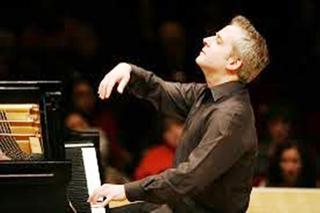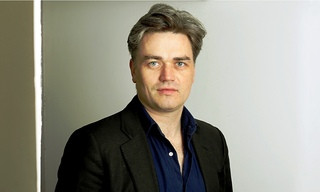|
Back
A Pair of Rare Jewels New York
David Geffen Hall, Lincoln Center
07/28/2017 - & July 29, 2017
Wolfgang Amadeus Mozart: Masonic Funeral Music in C Minor, K. 479a [477]
Ludwig van Beethoven: Piano Concerto No. 4 in G Major, Opus 58
Franz Schubert: Symphony No. 5 in B Flat Major, D. 485
Jeremy Denk (Pianist)
Mostly Mozart Festival Orchestra, Edward Gardner (Conductor)

J. Denk (© New Criterion)
Happily disregarding whatever was socially gala about the Gala Opening of the Mostly Mozart Festival, this writer was eager to survey two jewels for the second concert of the festival. And was not disappointed.
The first jewel was, as always, Jeremy Denk. No, he didnít offer his usual selection of Webern, Ives, Machaut and Zemlinsky. (And if he doesnít yet play Zemlinsky, he inevitably will). But the chance to hear him play Beethovenís most moving Fourth Concerto was a rare opportunity. The problem was that Mr. Denk was so glittering, so radiant, with trills and double octaves which sounded like Shaham on the violin, that one simply didnít want that orchestra to play in the background.
This has nothing to do with the Mostly Mozart Orchestra itself or its young conductor, Edward Gardner. The players are experienced, orchestral musicians, and Mr. Gardner exceed his reputation. But the Mostly Mozart Orchestra is still a pickup orchestra, and there was no way they could achieve the sounds, the acuity, the pinpoint response of the New York Phil.
Perhaps later in the season they will accumulate the comradely skill to offer personality or at least that special brio which leads to excitement. At the present time, they are competent but dull.
Then again, any orchestra accompanying Jeremy Denk has an Augean challenge, for he is in a class of his own. To repeat, those manifold Beethoven octaves, those trills, all the technical legerdemain offers Mr. Denk a singular path which few pianists can offer. He didnít sail through those demands as they were the simplest things in the world. Nor did he show off just how brilliant his technique was. Instead, he made every note count, he gave each phrase a silken lining, he allowed the most arduous task to become a gem of artistry rather than a hurdle set by the composer.
Mind you, one must be accustomed to Mr Denkís sometimes physical exaggerations. That is easy enough. He doesnít walk on stage, he literally skips on stage. He didnít turn the Fourth Concerto into a work of great profundity, but gave it a dance-like grace from the very first introductory bars, and he was not averse to waving his hands when finishing a balletic phrase.
This was not to everybodyís taste, but watching him over the years, one knows this is not affectation, but an obvious satisfaction which he has with his own execution.
This was his first movement, and the supposed ďOrpheus soothing the savage beastsĒ Andante con moto would have been equally joyful, save for a deadening reply from the orchestra. The finale was played Molto vivace, and Mr. Denk could have gotten way ahead of the orchestra had he wanted. He didnít, though, and Mr. Gardner seemed happy enough to let him have the pellucid music for himself.
Was it perhaps too glittering, too shiny? Perhaps for some. But it was simply terrific playing from a great artist. And to complete the artistry, an encore of the second movement from Mozartís C Major Sonata, K. 545, had the sublimity to complement the Beethoven.

E. Gardner (© Courtesy of the Artist)
The second jewel of the concert was the exceedingly rare Mozart Masonic Funeral Music, six minutes which equaled in depth some of the religious music of Magic Flute. While Iím usually averse to verbal introductions, Mr. Gardner gave an excellent description how Mozart used a Gregorian Chant hidden in the depths of the already dark orchestration. So unique was this (Mozart used three basset horns, and a contrabassoon) that one might hope some imaginative conductor add this to the Requiem perhaps as an interlude for the section Mozart never finished.
It was a new work for me, but Mr. Gardner apparently conducted it was well as possible.
After the intermission, Schubert Fifth Symphony bounced along pleasantly enough, but again, the Mostly Mozart Orchestra doesnít yet have the personality to for either ebullience or song.
Harry Rolnick
|